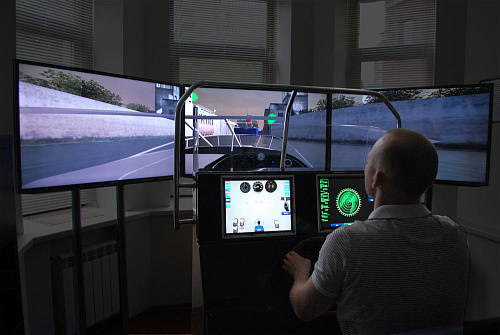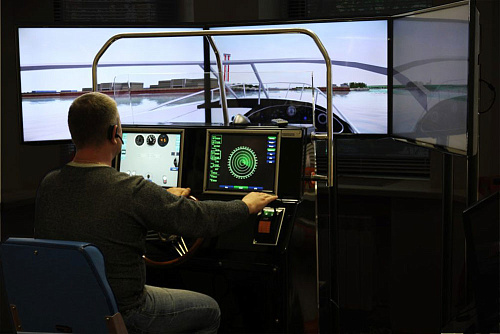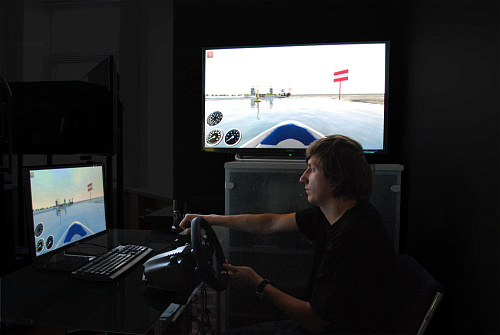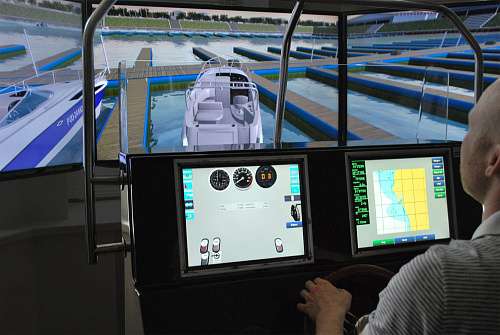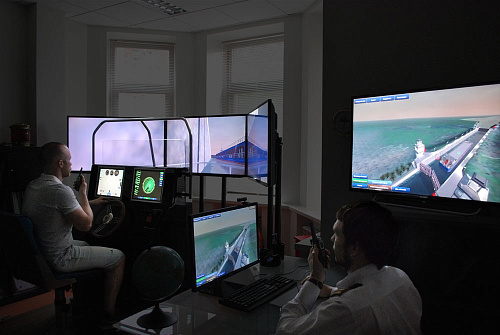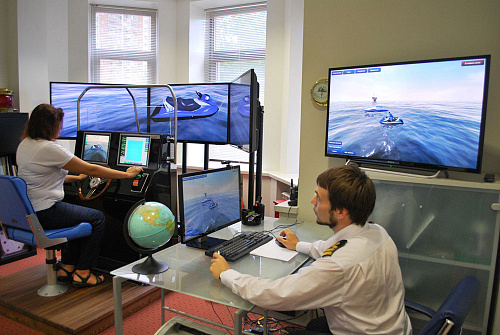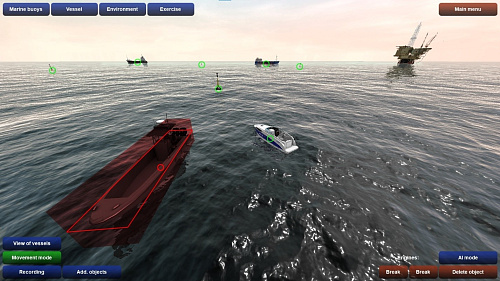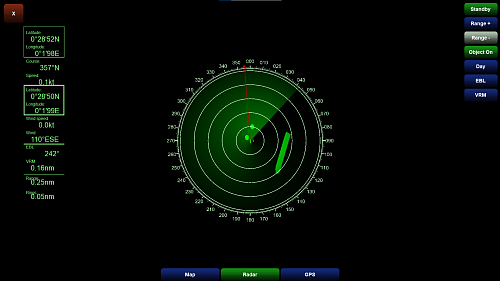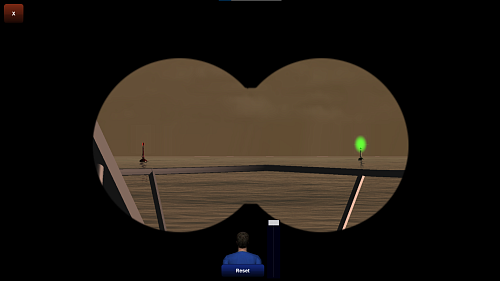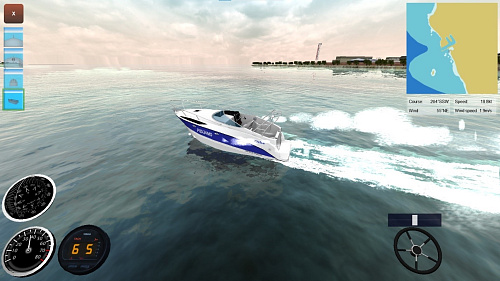:: Download details about version 3.0
PurposeSmall Craft Simulator (SCS) is intended for training and demonstrating of competence of sea-going and inland waterways small crafts navigators.
List of basic knowledge and skills, worked out with the use of Small Craft Simulator:
- Start Up and Shut Down
- Small craft handling and maneuvering
- Basic High and Low Speed Operations
- Anchoring
- Mooring
- Implementation of rules of the road
- Entering harbors at day and night
- Steering a course and use of magnetic compass
- Boat handling in restricted waters
- Astern maneuvering
- High speed maneuvering
- Maneuvering in high sea conditions
- Towing
- Man overboard search and recovery
- Usage radar and chart plotter
Simulated models
- active models of motor boat, cutter, pleasure craft, coast guard vessel (with two engines) marine patrol vessel (RIB)
- target models of merchant vessels more 4100 grt, sailing yacht, liferaft, helicopter.
Exercise areas
- Open sea area
- District approach from sea to port and marina
- The test area of inland waterways with access to the sea, gateway and multi-span bridges.
New simulator version 3.0 is based on our own developed graphical engine, and includes:
- New more realistic water surface visualization system and environment.
- New vessel models with acting behavior close to reality.
- Detailed models of floating navigation signs.
- The effect of “stretching” of the side channels of the surface situation visualization in the base version of the student’s workplace has been eliminated.
- Small craft control panel has been modernized.
- Electronic chart display simulator has been modernized.
- Radar simulator has been modernized.
- It is possible to substantially increase the size of the navigation area and the number of floating objects located therein.
- It is possible to connect a dynamic platform to the simulator.
- The maximum number of simultaneously operating student workplaces has been increased.
- The process of development and implementation of new navigation areas and vessel models has been simplified.
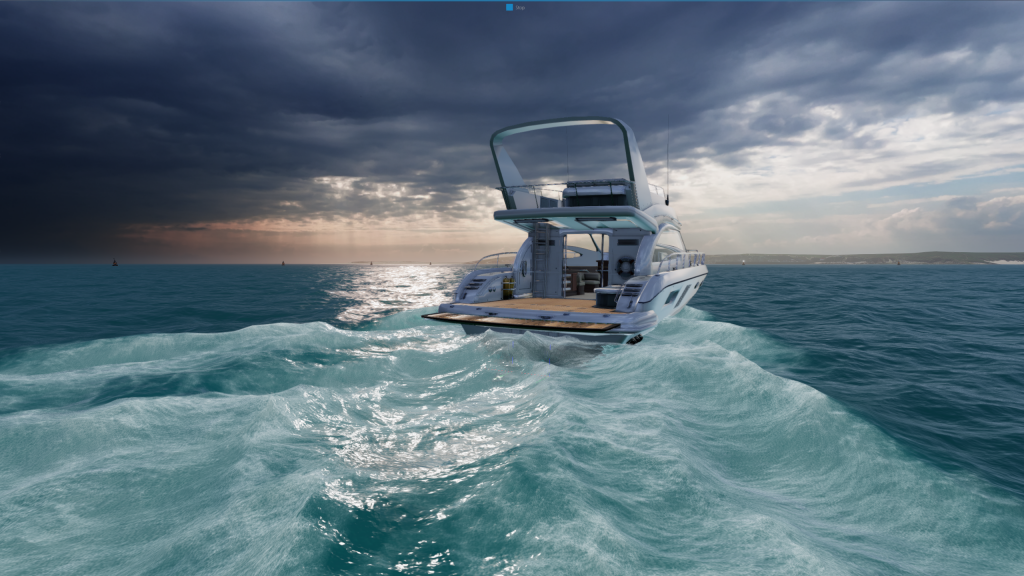
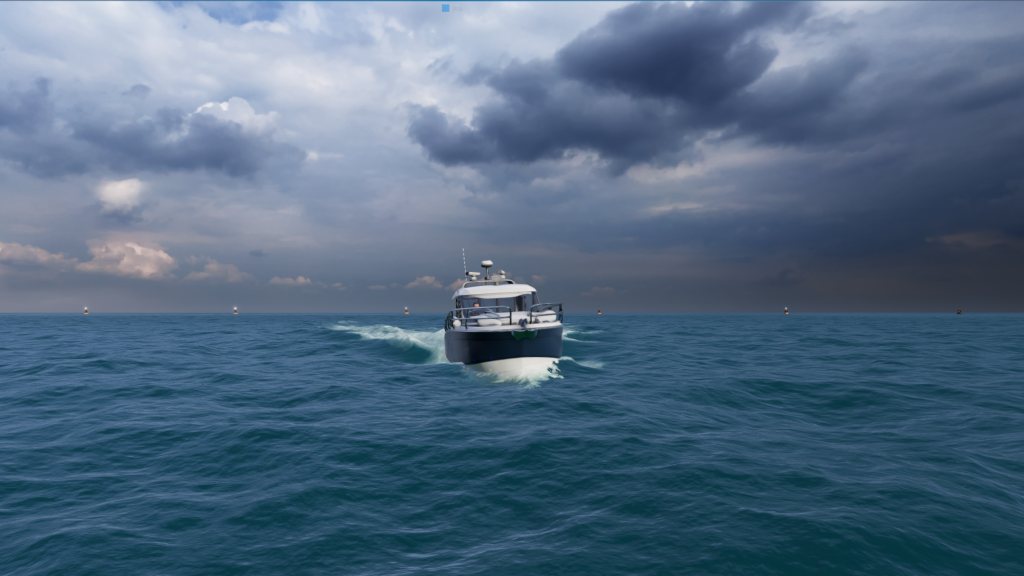
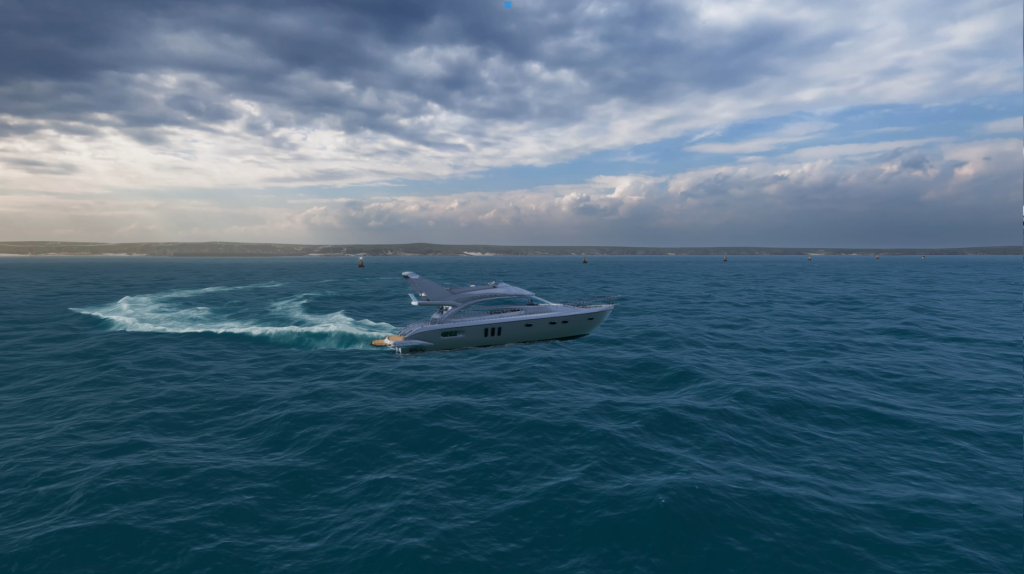
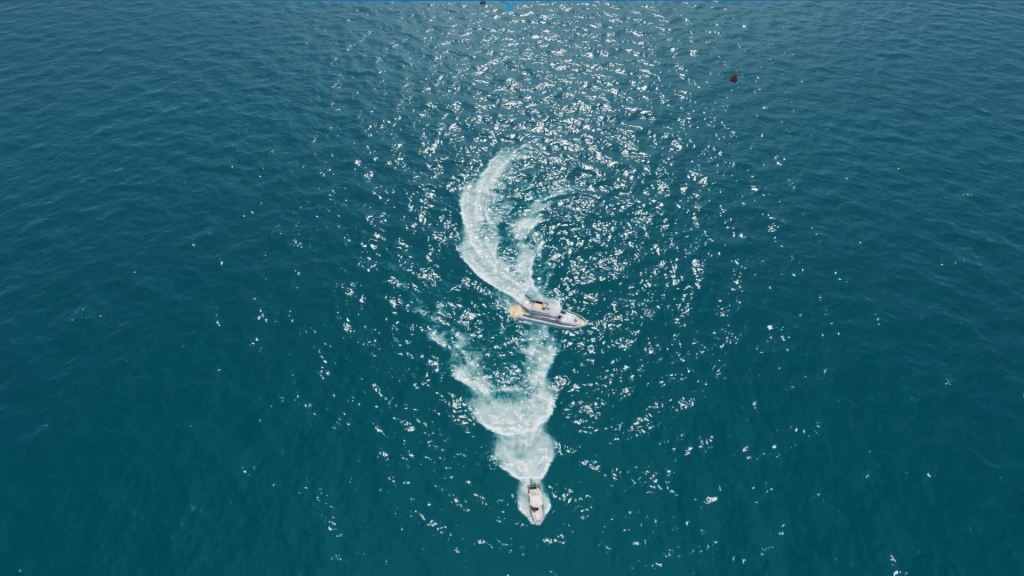
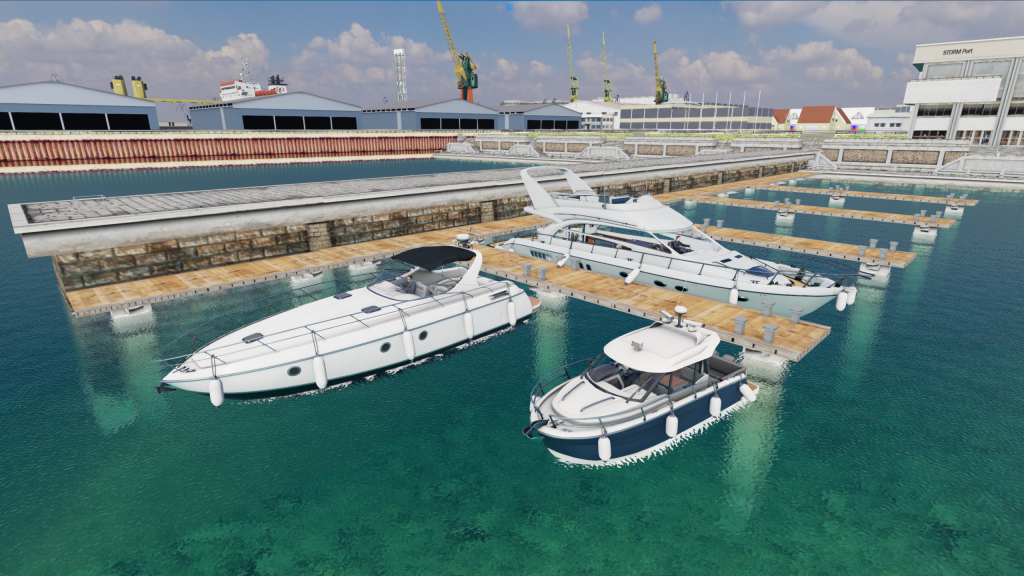

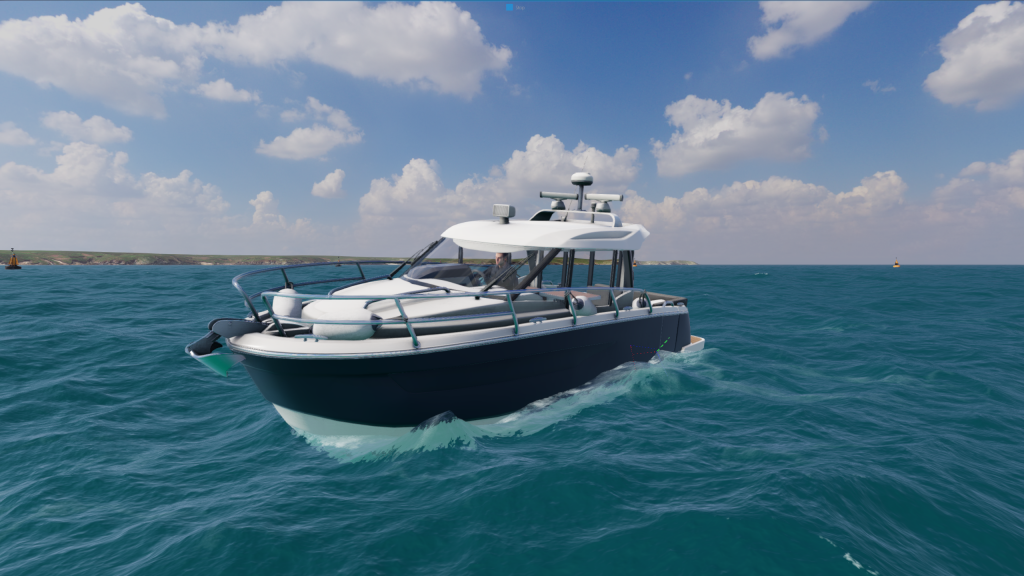
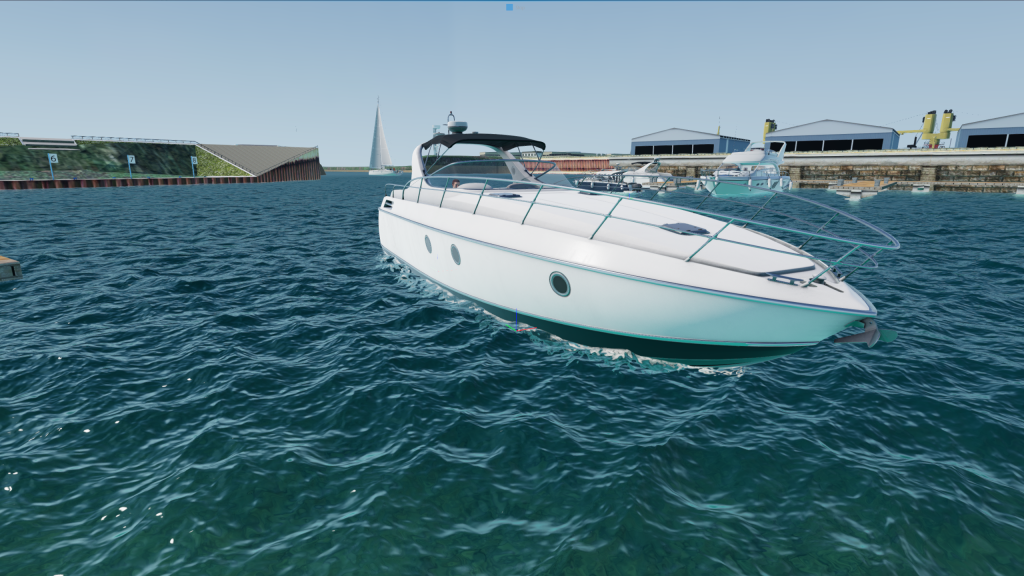
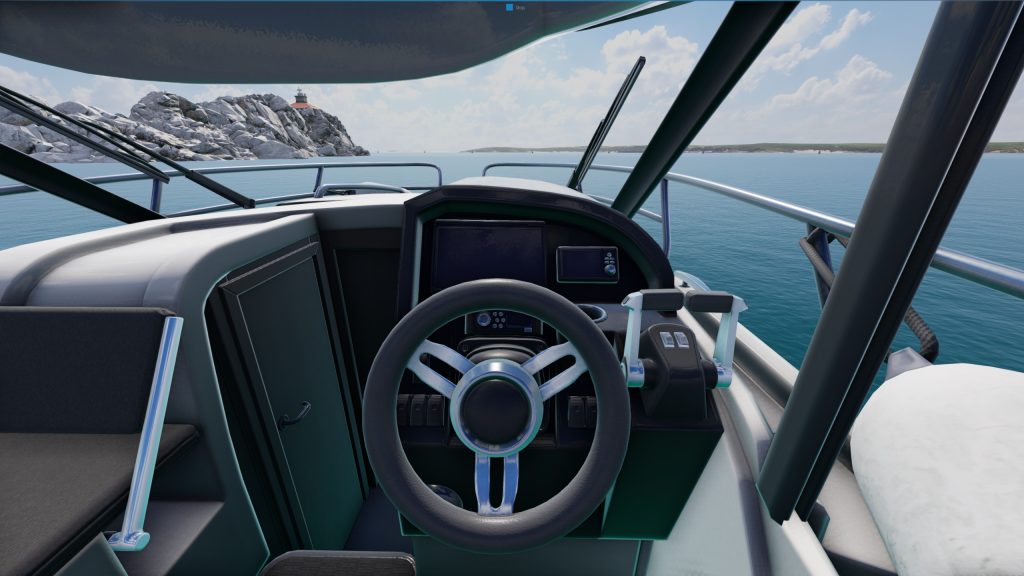
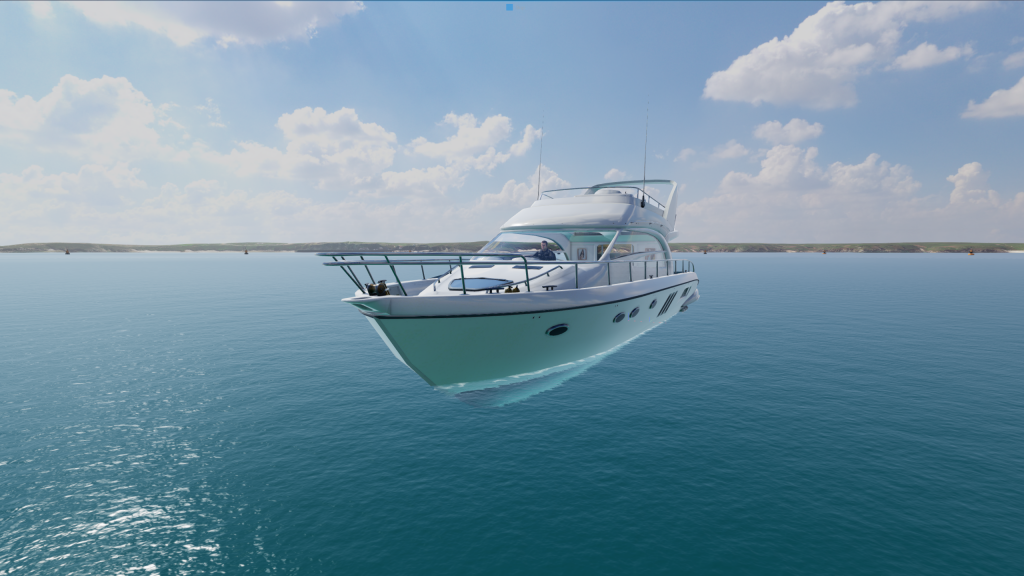
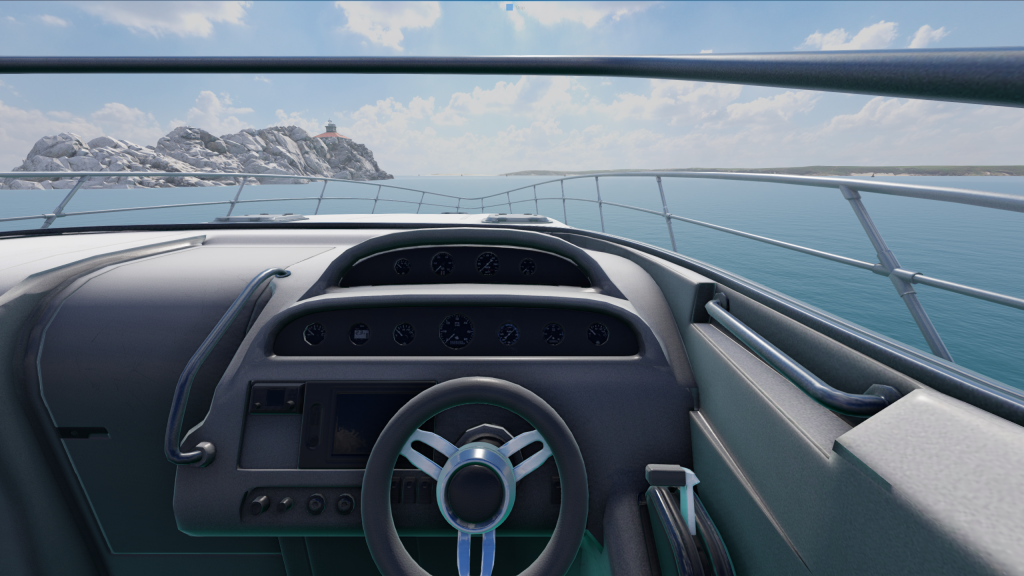
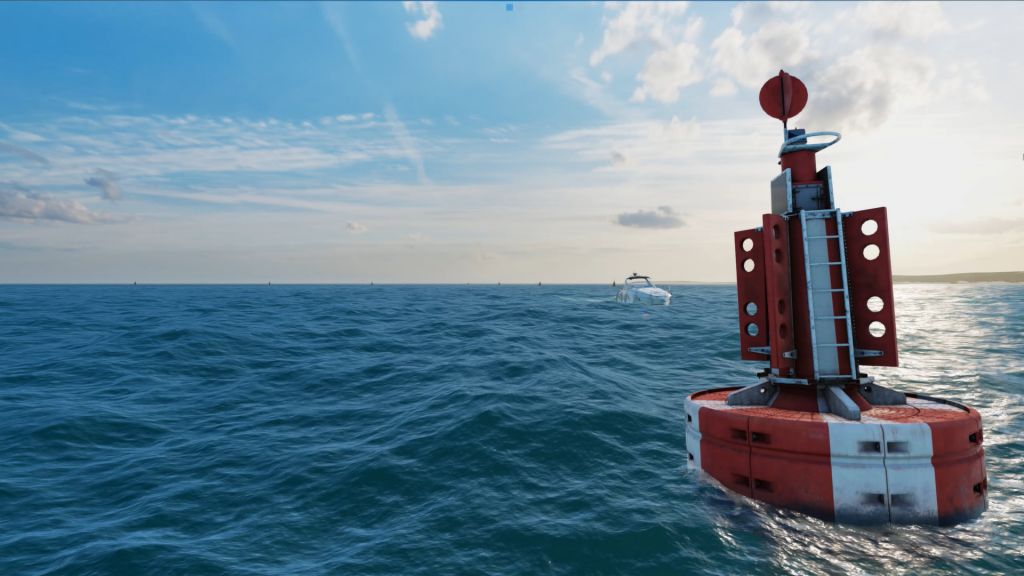
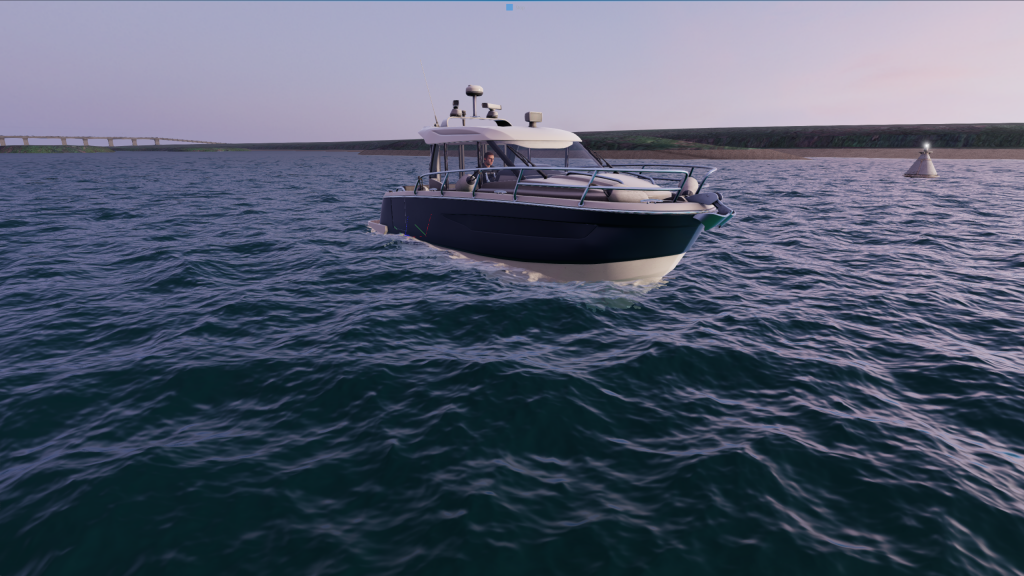
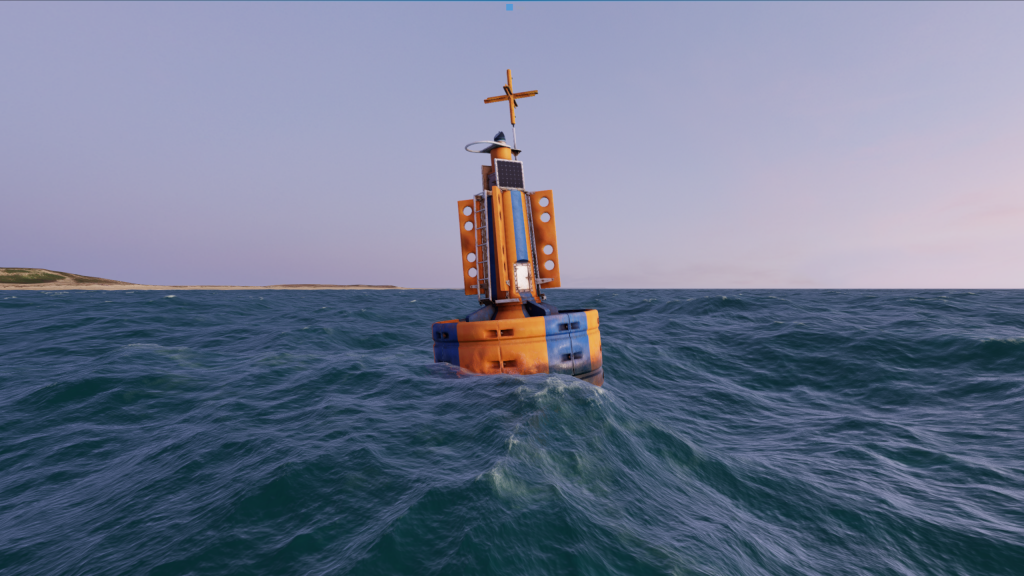
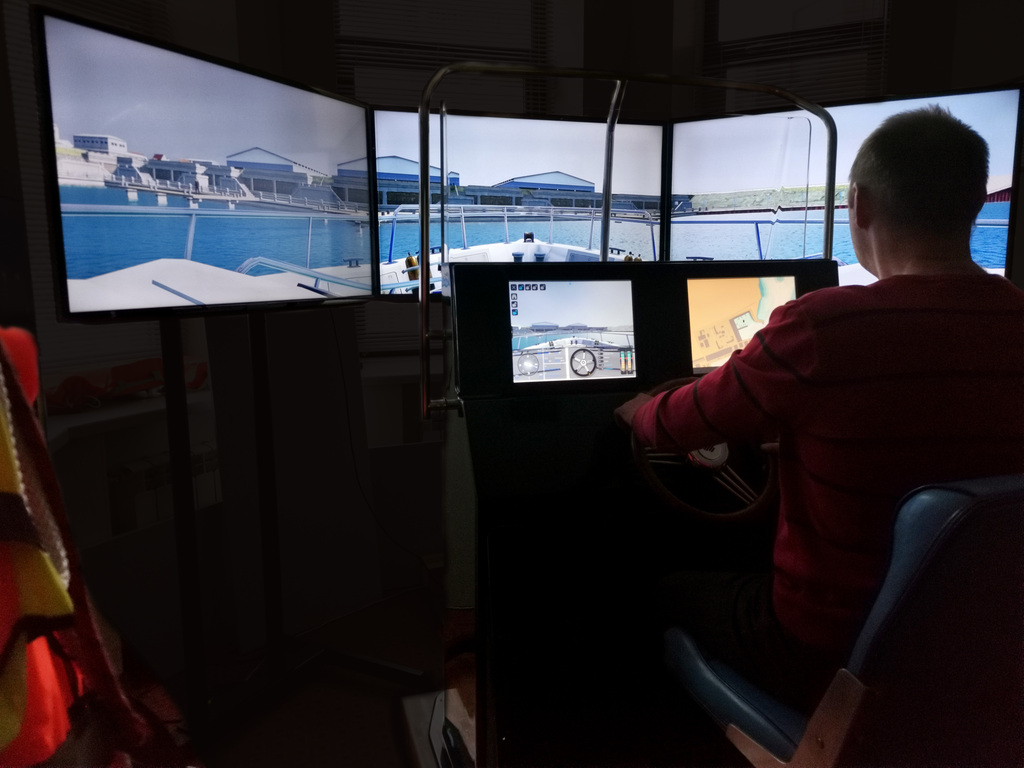
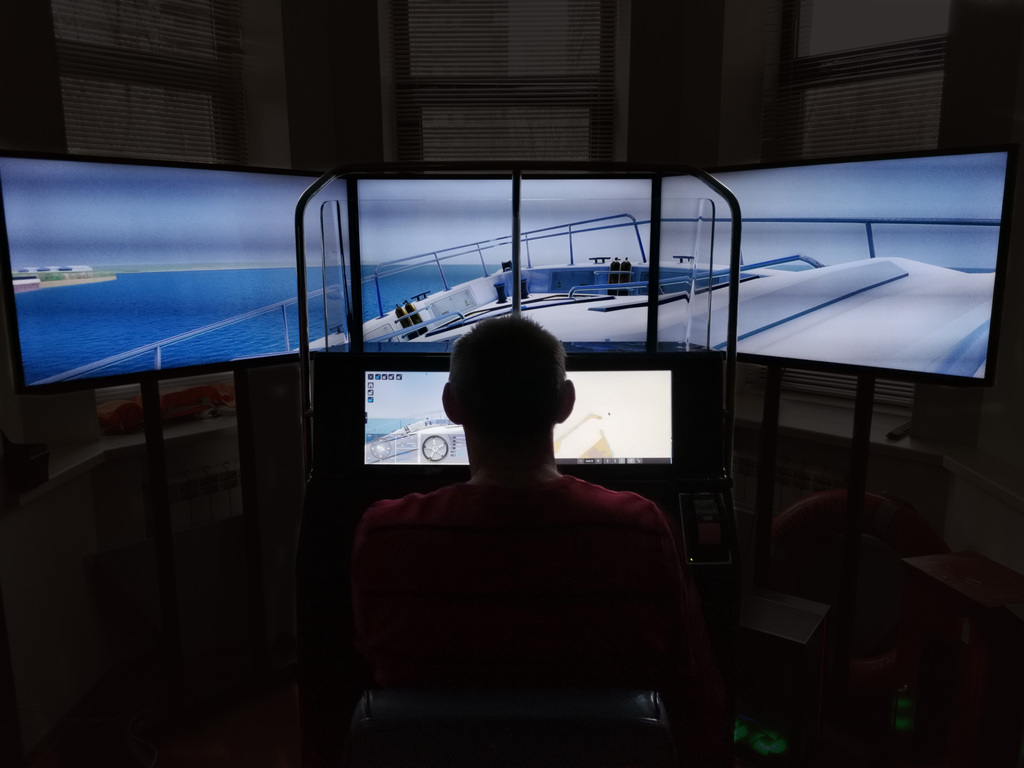
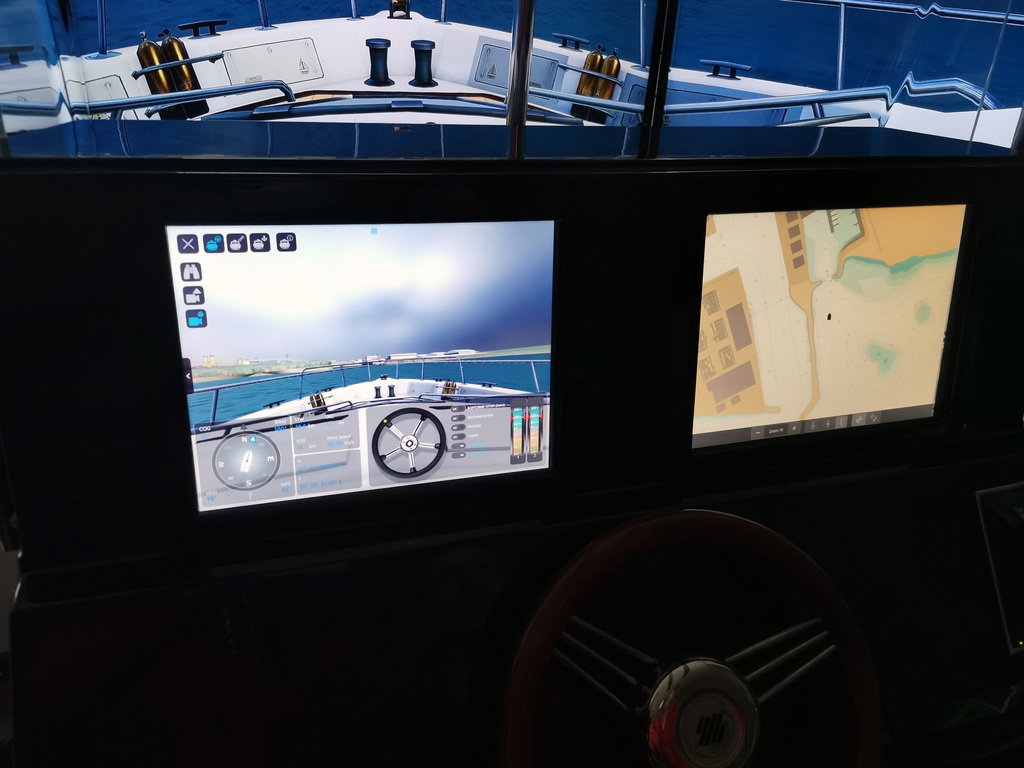
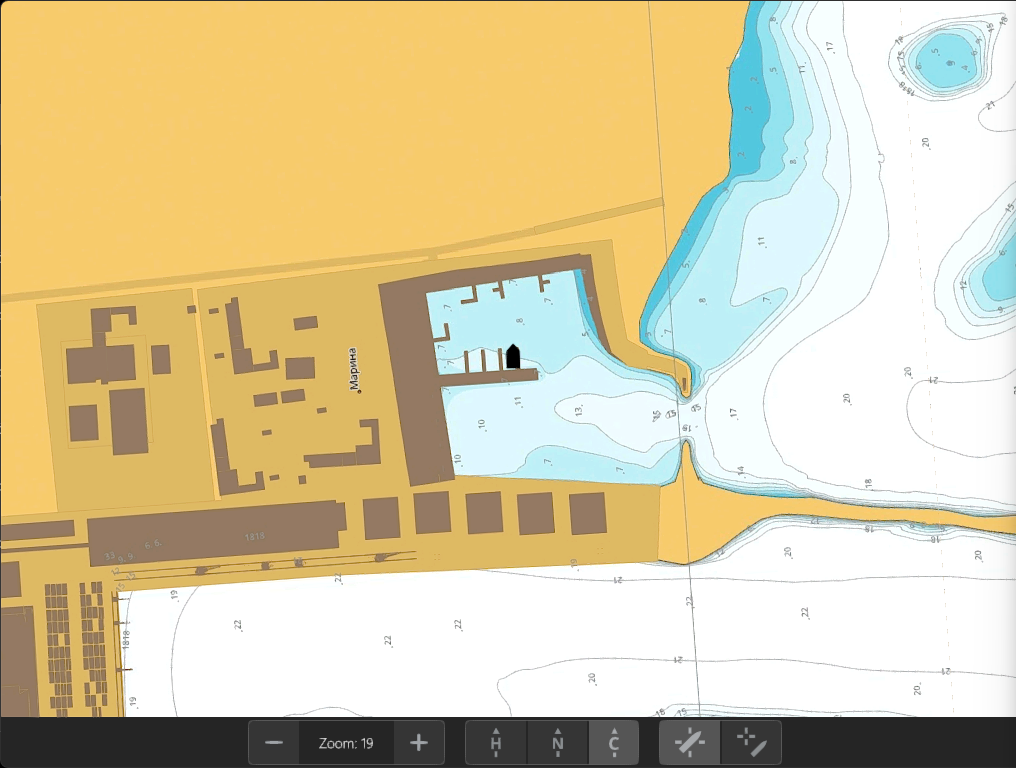
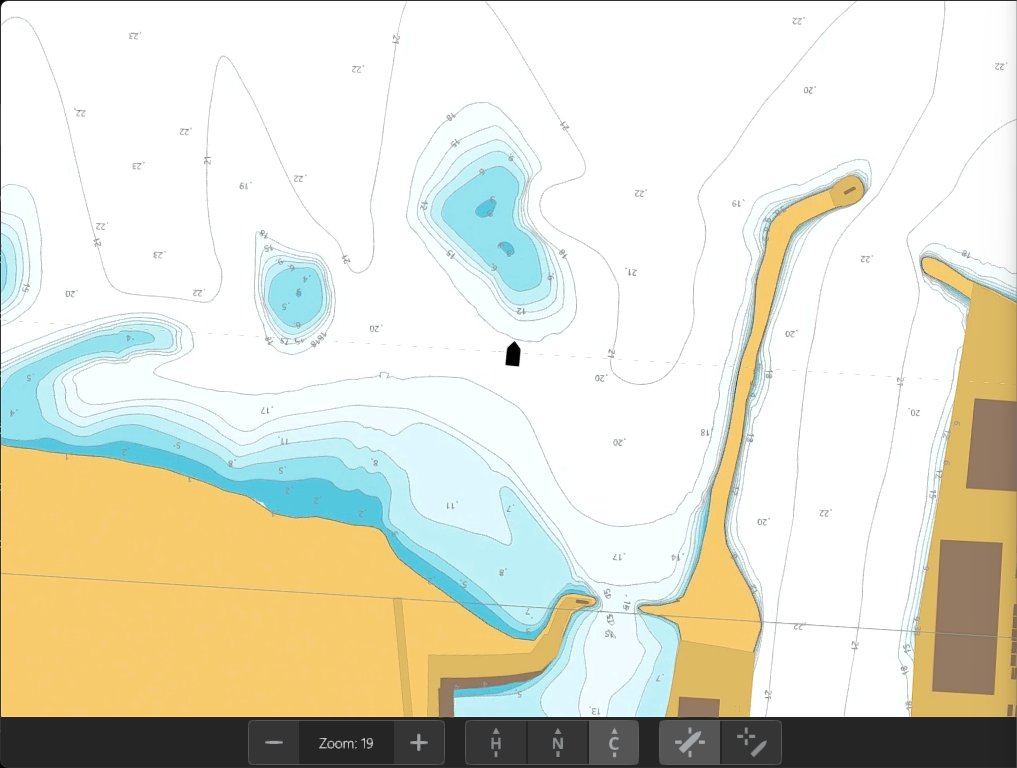
- choice of exercises and adjusting the initial parameters (area of navigation, hydrometeorological conditions, time of the day, placement and trajectory of the target vessels, emergency situations, installation of navigation signs);
- entry of new targets;
- visual control of the students exercising with the help of virtual cameras;
- active management of the students vessel;
- recording of the exercise for the debriefing.
Configuration
The simulator consists of the Instructor WorkPlace (IWP) software and one or several Students WorkPlaces (WPS).
Functional features of software Instructor WorkPlace (IWP) manages the process of training the student.
The Instructor provides:
Students workplace (WPS) provides the student with the opportunity of multiple fulfillment of the exercises set by IWP and improving practical skills. WPS can be presented in base or compact configuration.
Base configuration includes steering stand with built-in steering wheel, sensor control panels and visualization system on LCD panels.
Compact configuration includes steering stand and visualization system of the surfaced plant which come out on the display of the monitor. Steering is carried out with the help of joystick and mouse.
Students workplace (WPS) imitates steering stand including steering stand with built-in steering wheel engine control (throttle/gears), sensor control panel including magnetic compass, navigation lights сontrol buttons, search light control buttons, speed counter, radar, chartplotter and visualization of the surrounding surface situation.
Documentation
The simulator is supplied with a set of technical and operational documentation, including training and guidance on practical training.
Regulations
COLREGS
IALA
CEVNI
IALA
CEVNI

